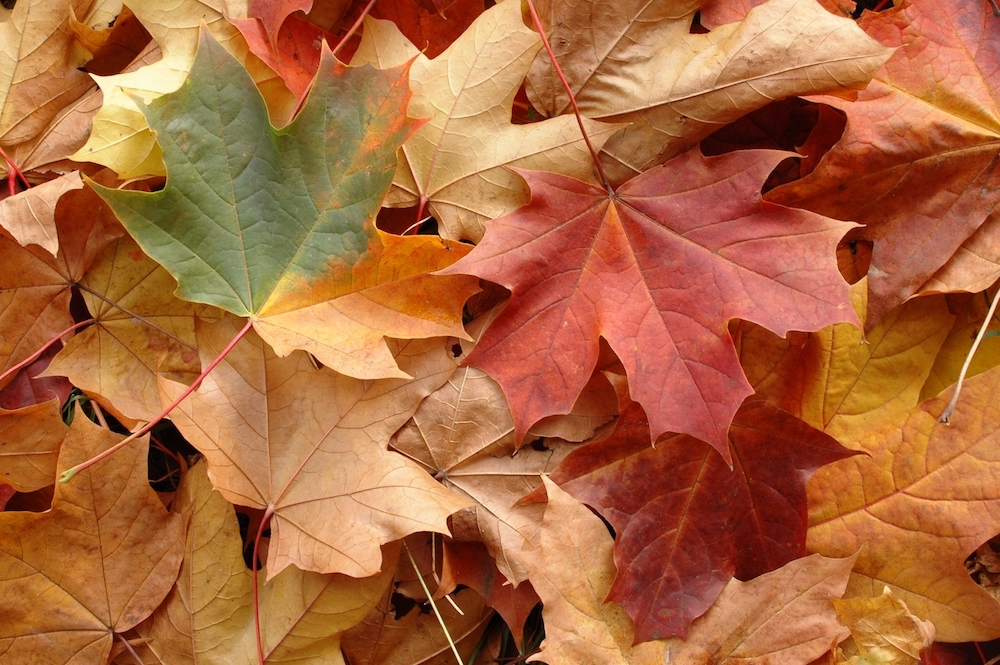
The fall color of maple leaves in the landscape. (C) Photo StockExpert
Every year, many of our trees perform a little fall magic, changing the color of their leaves right before our eyes.
Maple, oak, dogwood, tupelo, ginkgo, sweet gum and others turn their green leaves to red, bronze, gold, orange and yellow. An interesting fact? Many of these colors were there all along.
Fall Color and the Big Reveal
By the time we see fall colors, the trees have begun their preparation for winter, triggered by shorter days and cooler temperatures. The most obvious sign is they stop manufacturing chlorophyll, the pigment that makes leaves green. Without the green chlorophyll, the leaves reveal their true colors. As the colors change, the leaves begin to die and the trees go dormant.
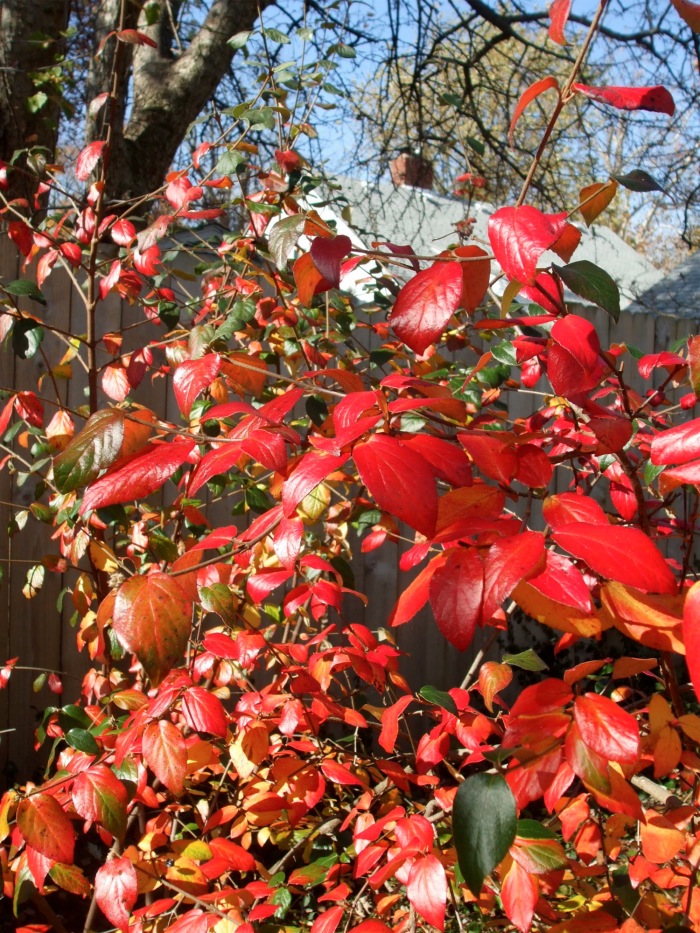
Burkwood viburnum in fall color. (C) Photo Jo Ellen Meyers Sharp
Leaves that turn orange have carotenoid pigments, the same ones that give carrots their colors. Ginkgo, sugar maple, katsura and redbud are among those that take on these tones.
Yellow leaves have xanthophyll pigments. Besides ash, beech, birch and a few other trees, xanthophyll gives fall squash and corn its yellow colors.
Anthocyanin pigments exist in the leaf. The waste created when chlorophyll breaks down produces them. Red maple, tupelo, sumac and scarlet and red oak are prime examples of these pigments’ colors.
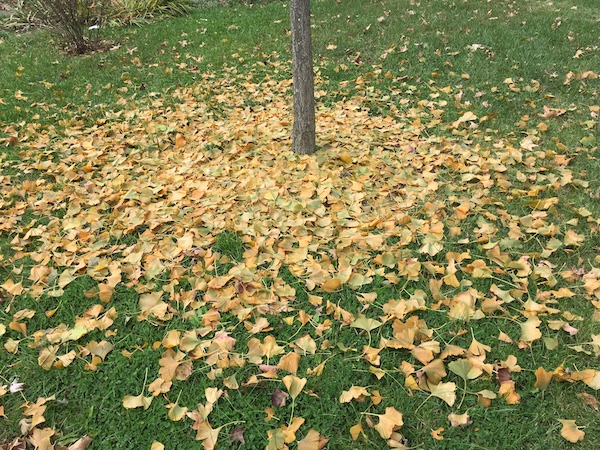
Ginkgo trees drop their fall color — golden leaves — all at once. (C) Photo Jo Ellen Meyers Sharp
Shrubs Shout Fall Color, Too
Many shrubs herald fall with colorful leaves. Viburnums, including many native species, are among the best for fall color, with many of them turning brilliant red, wine red or purple. Fothergilla, blueberry, chokeberry (Aronia spp.), deciduous holly, cotoneaster, panicle hydrangea and many spirea (Spiraea spp.) have leaves that turn red or purple.
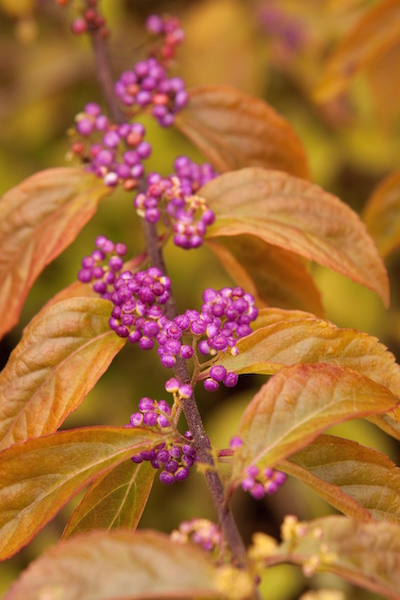
Early amethyst beautyberry sports berries and leaves for fall color. Photo courtesy ProvenWinners.com
The leaves of native buttonbush ((Cephalanthus occidentalis)), buckeye (Aesculus spp.) and summersweet (Clethra alnifolia) turn yellow. Smokebush (Cotinus spp.) turns red or orange.
Berry Beautiful Fall Color
Viburnums sit at the head of the class again as they present, red, black, pink or blue berries in fall, depending on the species. Even though birds love these berries, the plants are not considered messy, and the berries last well into winter.
Buttonbush and kousa dogwood (Cornus kousa) form red balls of fruits that look like ornaments. The native flowering dogwoods (C. florida) develop red berries amid the reddish purple fall leaves of the tree. Pagoda dogwood (C. alternifolia) has blue-black berries and the gray dogwood (C. racemosa) has white.
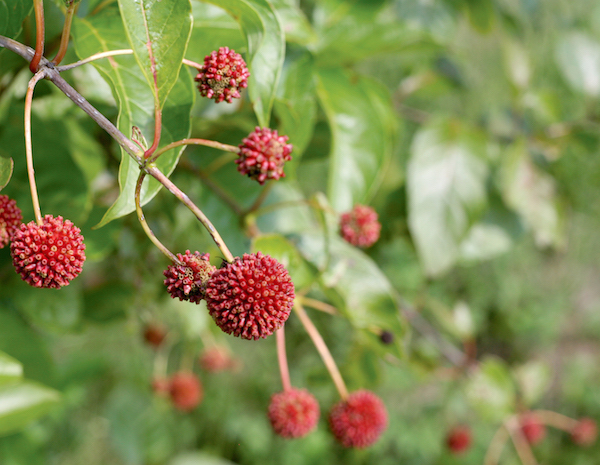
Sugar Shack buttonbush is a new introduction that gets about 5 feet tall and wide. Photo courtesy ProvenWinners.com
Beautyberry (Callicarpa spp.) has purple or white fruit along nicely arched stems. Native chokeberry have beautiful red foliage adorned with clusters of red (A. arbutifolia) or black (A. melanocarpa) fruits.
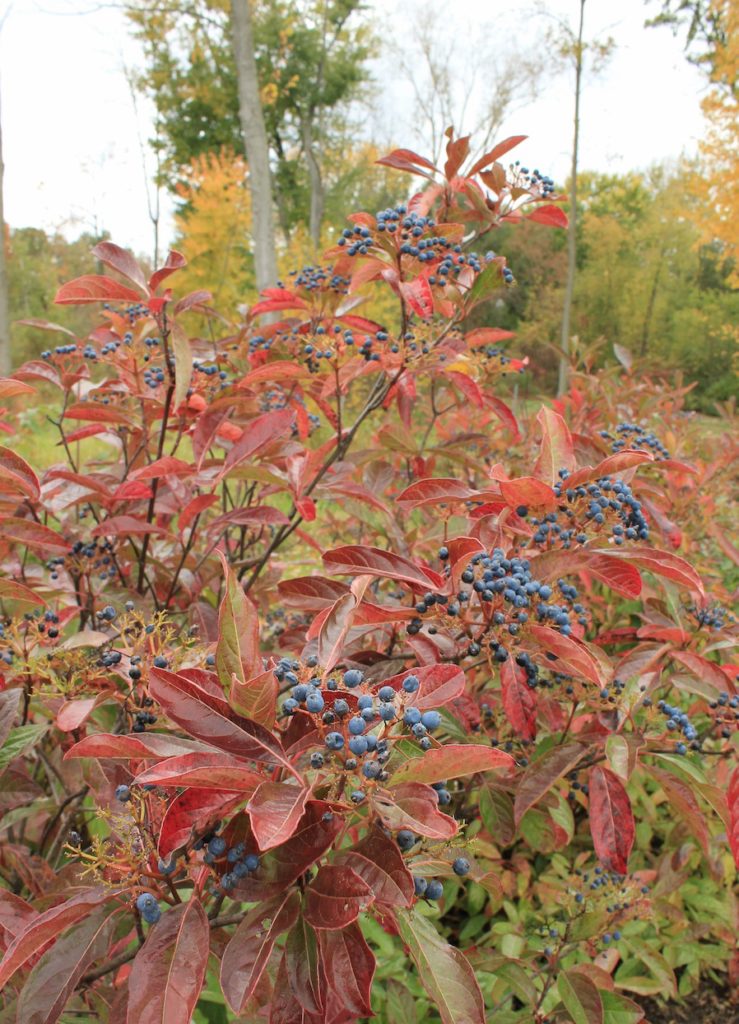
Brandywine viburnum struts its colorful fruit and leaves in fall. Photo courtesy ProvenWinners.com
Many crabapple (Malus spp.) trees are prized for their fruits and leaves that take on fall colors. Newer varieties retain their fruit well into winter, extending crabapple’s seasonal interest.
Contact a Holeman Landscape professional to guide you in your selection of trees and shrubs with fall and winter interest.
